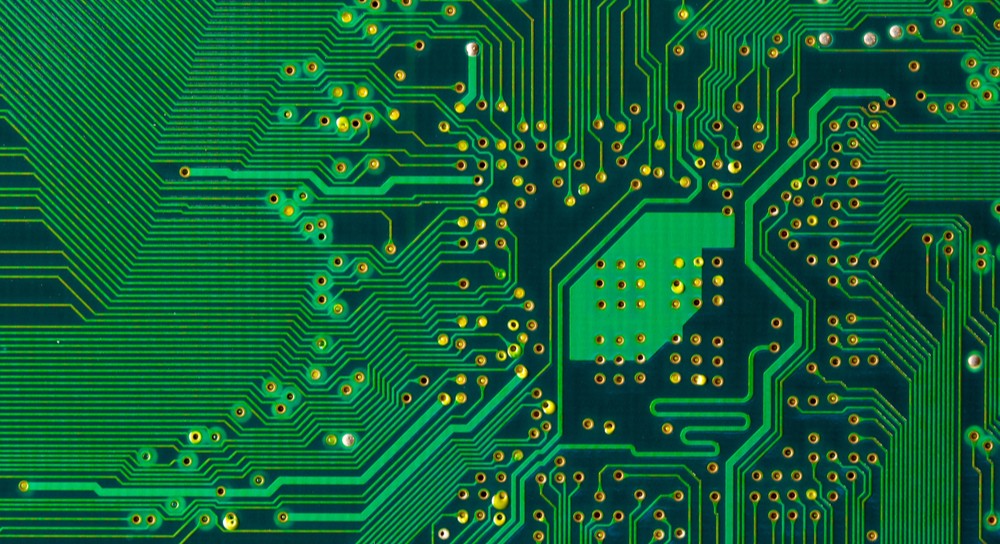The transmission rate of high-speed PCB design and wiring system is also accelerating with the change of the times, but it also brings a new challenge - the anti-interference ability is getting weaker and weaker. All this is due to the higher frequency of transmission information, the more sensitive the signal is, and the weaker the energy is, so the wiring system is more and more vulnerable to interference. In some common electronic equipment, such as computer screen, mobile phone, motor, radio broadcasting equipment, etc., cables and equipment will interfere with other components or be seriously interfered by other interference sources.

Especially when high-speed PCB data networks are used, the time required to intercept a large amount of information is significantly less than the time required to intercept low-speed data transmission. The twisted pair in the data twisted pair can resist external interference and inter pair interference through its own stranding at low frequencies, but at high frequencies (especially when the frequency exceeds 250MHz), the purpose of anti-interference cannot be achieved only by stranding and combining, and only shielding can resist external interference. The high-speed pcb design cabling system has brought a certain degree of anti-jamming vulnerability while the transmission rate continues to accelerate. This is because the higher the frequency of information transmission, the higher the sensitivity of the signal, and the weaker their energy. At this time, the wiring system is more vulnerable to interference. Cables and equipment may interfere with other components or be seriously interfered by other interference sources, such as computer screens, mobile phones, motors, radio relay equipment, data transmission and power lines. In addition, potential eavesdroppers, network criminals and hackers are also increasing, because their interception of UTP cable information transmission will cause huge damage and losses. The role of the cable shield is similar to that of the Faraday shield. The interfering signal enters the shielding layer, but does not enter the conductor. Therefore, data transmission can operate without failure. Because shielded cable has lower radiation emission than unshielded cable, network transmission is blocked. Shielded networks (shielded cables and components) can significantly reduce the radiation level of electromagnetic energy that may be intercepted when entering the surrounding environment. Shielding options for different interference fields mainly include electromagnetic interference and radio frequency interference. Electromagnetic interference (EMI) is mainly low-frequency interference. Motors, fluorescent lamps and power lines are common sources of electromagnetic interference. Radio frequency interference (RFI) refers to radio frequency interference, mainly high-frequency PCB interference. Radio, television broadcasting, radar and other wireless communications are common RF interference sources. For anti electromagnetic interference, braided shielding is the most effective, because it has a low critical resistance; For RF interference, foil shielding is the most effective. Because the braiding shield depends on the change of wavelength, the gap generated by the braiding shield allows high-frequency signals to pass in and out of the conductor freely; For high and low frequency mixed interference fields, the combined shielding mode of foil layer and woven mesh with broadband coverage function shall be adopted. Generally speaking, the higher the grid shielding coverage, the better the shielding effect.
Signal integrity: Ideally, in a PCB board, the signal should be transmitted from the source (Tx) to the load (Rx) undamaged/undoped. But in fact, it won't happen. There will be some losses when the signal reaches the load (impedance mismatch, crosstalk, attenuation, reflection, switching problems). Signal integrity (SI) is a term used to measure the distortion of these signals in high frequency areas. Signal integrity helps predict and understand these key issues by providing practical solutions. High speed PCB design needs to visualize the routing as transmission lines rather than simple wires. Identifying the highest operating frequency in the design helps to locate the routing that should be considered transmission lines. If the routing exceeds about 1/10 of the frequency wavelength, they can be considered as transmission lines. These transmission lines require both digital and analog analysis. PCB substrate: The substrate materials used in PCB construction may cause signal integrity problems. Each PCB substrate has a different relative dielectric constant( ε R) Value. It determines that the signal routing must be considered as the length of the transmission line. Of course, in this case, the designer needs to pay attention to the signal integrity threat. use ε R value, the designer can evaluate the velocity (V p) and propagation delay (t PD) of signal flow. These parameters help to determine the length of the cable that should be considered as a transmission line. The figure below depicts how insertion loss increases with signal frequency. Insertion loss (per inch) is measured for FR-4 (glass epoxy) and high-frequency PCB Rogers RO4350B materials. Higher insertion loss may result in greater attenuation.